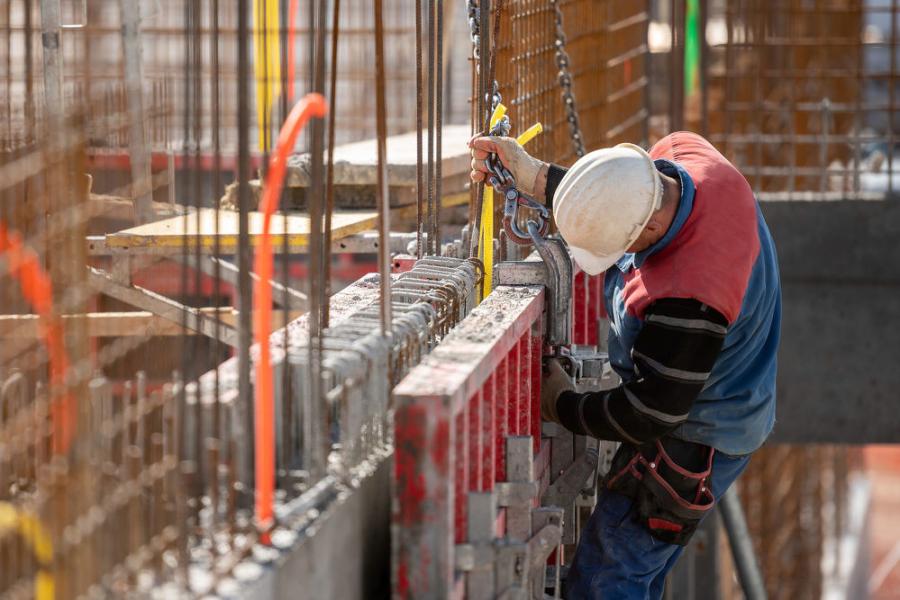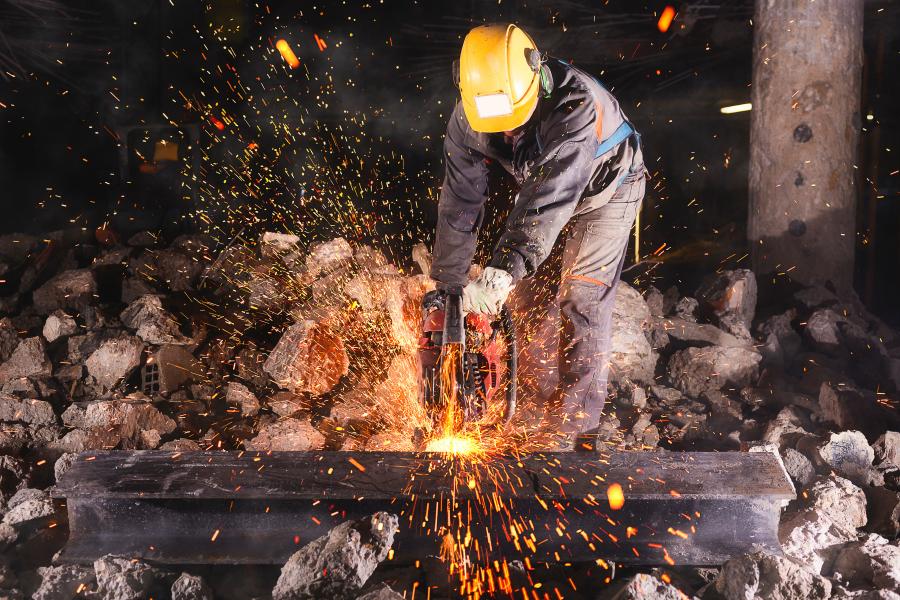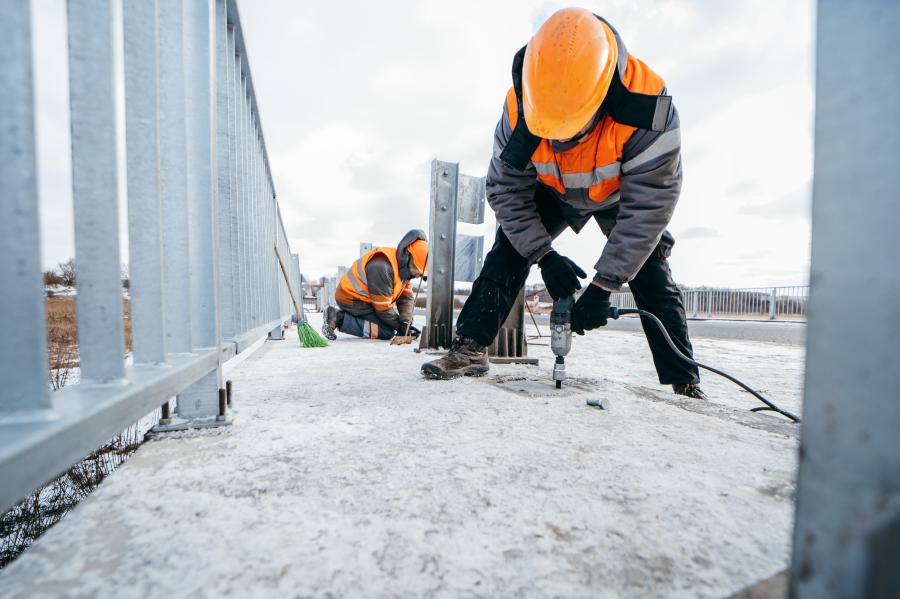Taking required safety precautions, most notably wearing hard hats, has significantly reduced the number of injuries caused by construction workers coming into unintended contact with pipes and structures.
The top four causes of accidents on the construction site remain falls, strikes from objects, crushes between objects and electrical shock. Too often, though, workplace accidents and injuries can be attributed to the materials being used on the job site. There are easy methods to avoid incidents and keep workers safe on the construction job.
OSHA safety standards spell out the exact process for preventing injuries to crew members. There are many causes for these incidents, but Grant Law Office points to negligence as chief among them.
Lack of proper worker training contributes to that negligence. The law team said improper use of or malfunctioning tools and equipment; failure to properly secure tools or components and improper stacking of tools, equipment, supplies or materials contribute, as well.
Inadequately securing loads on a boom, hoist or crane; loads that are too heavy; failure to use safety devices designed to stop falling debris and objects; faulty parts or materials that break down or lead to structural collapse; and lack of posted warning signs can all be tied to accidents.
Exponentially Improving Conditions
Legal experts say recognizing hazards and making simple changes in work processes as a result can improve conditions exponentially.
"For instance, the seemingly common-sense requirement to bolt new steel instead of welding it in pre-existing wood structures can significantly reduce the risk of costly and dangerous fires," attorney Neill Flynn, The Platta Law Firm, told Structure magazine. "Whether made of steel, lead, cast iron or copper, pipes are invariably denser, heavier and capable of making short work of the human body.
"Required safety precautions, most notably hard hats, have significantly reduced the number of injuries caused by construction workers coming into unintended contact with metal pipes."
Unfortunately, these materials are still the source of a "significant" percentage of workplace accidents, he noted.
So do incidents related to working around pipes. Due to their weight and "unyielding nature," Flynn said pipes are inherently dangerous whether they fall on an unsuspecting worker or cause an impact injury from improper storage.
"Something as simple as an unevenly stacked rebar can easily cut a worker or cause one to trip and fall," he said. "Given the nature of construction sites, where almost everything is sharp, hard and/or heavy, what might otherwise be a benign occurrence can quickly become a career or an even life-ending event."
Electrical wiring and other dangerous materials such as conduit and fixtures, invariably found on construction sites, can be hazards.
The most obvious source of injury from such materials is the risk of electrical shock, said Flynn.
He added while it's most closely associated with injuries to electricians, a significant number of electrical injuries are sustained by construction workers in every trade.
Wiring by its very nature creates a high risk of trip and fall injuries stemming from entanglements in loosely or otherwise improperly stored materials, he said.
Flammable materials pose an inherent danger on the construction site. Solvents, liquid petroleum gas and adhesives pose multiple risks ranging from flammability and combustion to inhalation dangers, said Flynn.
"As the general public has become inured over the last two years to wear masks due to the COVID pandemic, construction workers and especially safety officers have long been aware of proper breathing protection procedures."
Such materials must be stored and used in adequately ventilated spaces, he continued.
"Fire or even explosions are the most obvious risk associated with combustible and/or flammable substances. However, they pose additional risks that are often overlooked."
Simple skin contact with these materials can cause injury, said Flynn. They're often more dangerous when inhaled due to the lack of or failure to use proper respiratory protection.
"Damage to the lungs and respiratory system overall can range from immediate to long-term and can, in many cases, be fatal."
Foot injuries are a very common occurrence on construction sites, especially from falling objects. But there are many other causes and types of injuries.
Rhoades Legal notes that in addition to electrical shock, workers can suffer broken bones, punctures, cuts and lacerations, burns and sprains all involving the feet and negligence.
The law firm noted that workers can be crushed or suffer broken foot bones due to falling objects, moving vehicles and being trapped or caught between objects.
Punctures of the sole of the foot are caused by loose nails, sharp metal or glass objects.
"Puncture wounds can easily get infected if not treated promptly. You can even get tetanus from a puncture injury," according to the legal team.
Cuts and lacerations of the feet can be caused by chainsaws, rotary mowers and unguarded or improperly guarded heavy machinery.
Foot-related burn injuries can result from splashing molten metal, chemical spills, contact with fire and flammable or explosive materials.
Electrical shock is caused by static electricity, contact with sources of electricity, including exposed hot wiring or wiring that is not properly grounded.
Finally, sprains can happen in slip and fall accidents. A worker could slip and fall on scaffolding or from wearing improper footwear.
Maintaining Safe Work Sites
Many local jurisdictions provide legal means to compensate injured workers, but both site owner and contractor can be proactive by integrating a mix of strictly enforced site safety practices, OSHA regulations and simple common sense, said Flynn.
"By collecting and monitoring information about the project, increasingly in real-time, structural engineers can anticipate problems before they reach the critical stage and can be managed before someone gets hurt."
He urged frequent site inspections, regular safety meetings and rigorously enforced site safety standards supplemented with real-time data collection systems.
"Comprised of wireless onsite sensors coupled with data collection nodes, such systems streamline the structural engineer's ability to monitor the entire building site and anticipate problems before they arise," said Flynn. "These systems can be customized to monitor material storage and the location and movement of workers throughout the site, thereby giving the engineer the ability to anticipate and prevent dangerous or even deadly accidents before they happen."
What simple common-sense measures can be implemented on the job site? The list is long, but Rhoades refers to OSHA's rules for preventing workplace injuries:
- Workers must wear safety shoes when working in locations where there is a risk of slipping and falling or objects piercing the sole.
- Protective footwear must meet ANSI Z4 or have equivalent design requirements. Impact and compression protection are provided by all ANSI-approved shoes.
"However, the level and sort of protection may not always be the same. Different footwear protects users in various ways. Make sure to review the label of the footwear."
Shoes or boots may need to have special electrical conductivity insulation or other non-conductive protective material in order to prevent electrical shock.
Chemical-resistant boots may be required to protect against caustic, reactive, toxic or corrosive substances during cleaning or surface preparation.
Slip-resistant shoes should always be worn in any type of construction or production facility environment, but especially if the worker will have to be in icy or rainy weather conditions.
Many construction work settings require boots with toe caps and puncture-proof soles. Non-slip soles, chemical-resistant materials, insulation or other protective features may be required in your profession.
"Ensure that the shoes are safe according to necessary safety standards."
Grant Law Office noted the adoption of additional safety precautions to reduce the risk of injury specifically from falling objects on the construction site:
- Always wear protective gear, such as helmets, goggles and hard-toe boots. Avoid hazardous areas for falling materials.
- Never walk or stand under heavy equipment, such as a front loader, hoist or crane, particularly when it is carrying a load.
- Use the proper equipment for the job at hand. Never stack materials or objects too high. And inspect equipment and tools before using them.
- Never use improperly maintained or faulty equipment or tools; never exceed the lifting capacity of a hoist, crane or lift; and secure tools and equipment properly when working overhead. CEG
Lucy Perry
Lucy Perry has 30 years of experience covering the U.S. construction industry. She has served as Editor of paving and lifting magazines, and has created content for many national and international construction trade publications. A native of Baton Rouge, Louisiana, she has a Journalism degree from Louisiana State University, and is an avid fan of all LSU sports. She resides in Kansas City, Missouri, with her husband, who has turned her into a major fan of the NFL Kansas City Chiefs. When she's not chasing after Lucy, their dachshund, Lucy likes to create mixed-media art.
Read more from Lucy Perry here.
Today's top stories

















